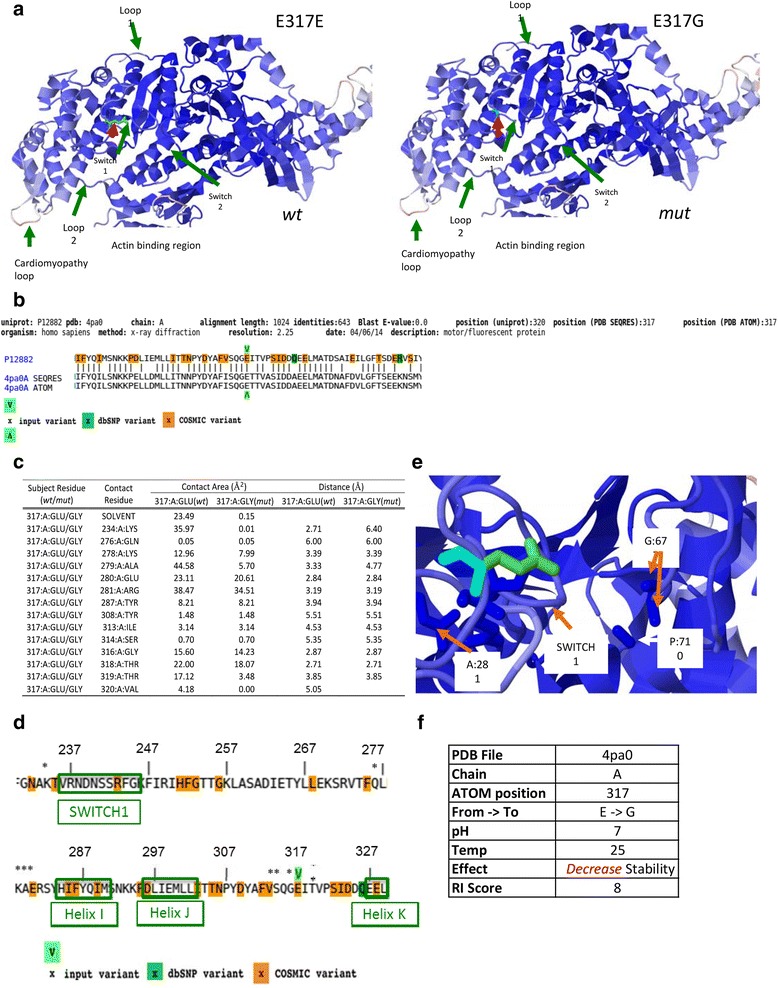Fig. 4.

Schematic representation of MYH1 (MyHC 2X) with wild type (E317E, wt) and MYH1 mutation (E317G, mut). a Wild-type (wt) variant is shown as light green (red arrow) and E317G mutation (mut) is shown on the adjacent panel as teal (red arrow). In both panels, helices are represented as blue and additionally loop, SWITCH regions and actin binding sites are labeled. b Detailed alignments of the query protein (upper sequence line) and structure hits showing the protein sequence (PDB SEQRES record) and the resolved coordinates (PDB ATOM record). The input variant is indicated by green arrows (below and above the alignment) and highlighted amino acids represent residues that appear in dbSNP as well as common associated somatic mutation in cancer (COSMIC) variants. c Side chain and stability analysis of MYH1 E317G mutation showing contact surface areas between atoms and solvent accessible surfaces. Table includes contact surface area (Å2) and minimal atomic distance (Å) between two atoms of the two residues for the 15 amino acid residues that were determined to be impacted by the mutation. d A pictorial presentation of contact/residues affected by the MYH1 E317G mutation and its association to SWITCH1, helix I and helix J regions of MYH1. The residues affected are represented with an asterisk (*). Helix K is partially represented. The input variant is indicated by green arrows (below and above the alignment) and highlighted amino acids represent residues that appear in dbSNP as well as common associated somatic mutation in cancer (COSMIC) variants. e G23D model displaying a close up of combined MYH1 mutation (teal only) and wild type (green). Blue represent the helices and shows the proximity of the MYH1 mutation to the SWITCH 1 region and to the G677 and P710 residues found between Loop2 and SH2 helix domain of MYH1. f Stability analysis of the E317G mutation using I-mutant-2 at physiological pH, which predicts decreased stability of the mutant protein
